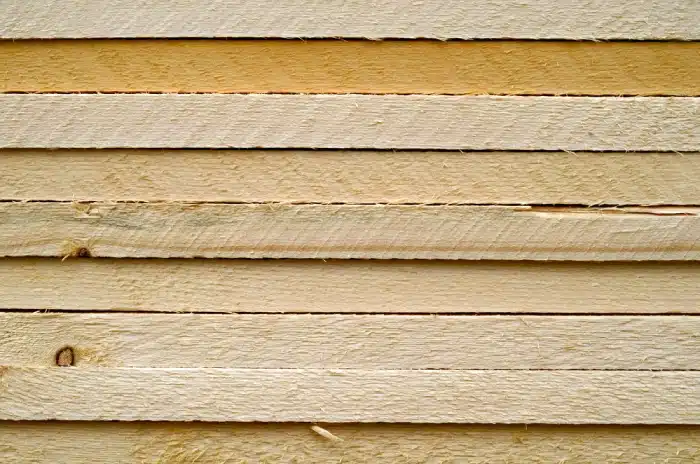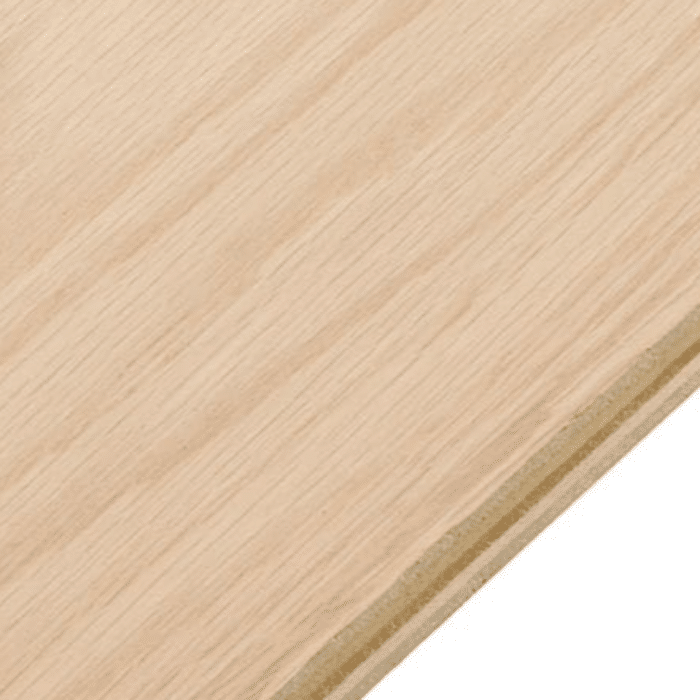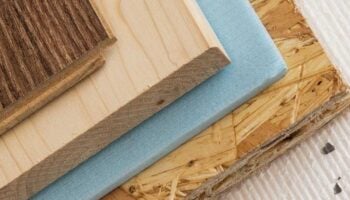We've independently reviewed this article to make sure it's as accurate as we can make it.
To find out more about our article creation and review process, check out our editorial guidelines.
Are you having a hard time comparing Luan vs plywood?
Believe it or not, this is a common issue that thousands of people face when standing in front of a wall of wood sheets at the hardware store, wondering which one to choose.
But, don’t worry. You’ve come to the right place for answers.
Luan is typically less expensive, thinner, and more flexible than other types of plywood, which is ideal for lightweight decorative projects, while other types of plywood are better for construction, flooring, or heavy-duty furniture.
Read on to learn more about the main differences between Luan and other types of plywood.
Luan vs Plywood
When it comes to Plywood and Luan, telling them apart can be a bit challenging. This is why I’ve created a list of their main differences that will help you gain a better understanding of these two wood panels.
#1 Price
Direct price comparison is not always easy. The various types come in different sizes and thicknesses.
Exact prices change according to current lumber prices, and so instead we have ranked the five types of plywood according to relative price.
- Luan – Cheapest
- Softwood – Cheap
- Hardwood – medium
- Marine – Expensive
- Aircraft – Expensive
Luan is usually the cheapest form of ply because it’s made from a thinner panel of tropical hardwood, which is typically less expensive.
#2 Strengths
All forms of plywood are relatively easy to work with and extremely versatile. It’s one reason ply has become such a standard in the woodworking and building trades.
But each of the categories has slightly different strengths. Let’s take a look:
- Luan – Flexible and easy to form and bend with a smooth surface that can be used for a variety of finishes.
- Softwood – Versatile and lightweight with good strength. Comes with a variety of glues and coatings for different applications.
- Hardwood – Strong with excellent damage and impact resistance. Warp resistant and can come with veneer finishes.
- Marine – Water-resistant and weather-resistant. Strong and resistant to separation and humidity. Typically, coated externally with weather and boil-proof glue.
- Aircraft – Manufactured to strict standards for strength and heat resistance. Particularly good strength-to-weight ratio. Usually approved by an international standards agency.
So, each of the five main types of plywood has its own strengths. The right plywood will entirely depend on the job you’re doing.
#3 Typical Uses
It’s also important to consider the type of project you’re planning on doing. This way, you can choose the right type of plywood.
Typical uses:
- Luan – Subfloor for vinyl and carpet, furniture veneers and bent surfaces, surfaces that require a smooth finish.
- Softwood – Home construction (floors, walls, roofs), packaging, ready-to-paint panels (if coated).
- Hardwood – Structural uses, industrial floors and high-wear surfaces, vehicles, instruments, furniture.
- Marine – Waterproofing, external protection, boat building, areas subjected to moisture (bathrooms, kitchens).
- Aircraft – Specialist applications including some aircraft and areas where heat resistance and strength are paramount.
If you’re planning a project that requires stronger materials, I recommend choosing a different type of plywood, as Luan is suited for lightweight and decorative projects.
Plywood vs Luan: A Short Summary
In short, Luan is a form of Plywood – they’re technically the same thing. Luan is a form of tropical timber which is cheap and more flexible compared to typical plywood.
However, Luan is also not as strong as normal plywood and is best used for smooth finishes or cases where you need a slight bend in the plywood. Traditional plywood is better than Luan for strength and hardness in most cases.
Plywood is both decorative and structural, while Luan is mostly decorative.
Types of Plywood
Plywood is not just plywood and has vast differences in properties depending on if it’s hardwood, softwood, tropical, aircraft or marine.
And as we can see from above, luan is basically a term for tropical plywood. Especially in later years, where luan isn’t the only tropical wood used in what we call luan plywood.
So, for a complete look at Plywood vs Luan, we need to take a quick look at the five major types of plywood.
#1 Softwood
For the average DIY or construction project, softwood ply is usually what you think of. Made from common softwoods such as Douglas fir, spruce, pine, or cedar (and sometimes a mix of spruce pine and fur which is SPF ply).

Softwood ply is suitable for roof sheathing and subfloors due to its strength and durability. It’s relatively cheap and extremely versatile.
Some softwood plies are treated with glues and coatings to make them weather resistant or suitable for specific purposes.
#2 Hardwood Plywood
Manufacturers make hardwood ply from trees known as dicots (flowering plants that have two seed leaves). This includes oak, beech, cherry and mahogany.
We know hardwood plywoods for their strength and hardiness. They are excellent for heavy-duty uses and structural support.

The surface of hardwood ply is very damage resistant. Which is often why you use it for projects needing impact protection.
#3 Aircraft plywood
High-strength or aircraft ply is just as the name would suggest. Originally used in the construction of World War II era aircraft.

They make the ply from mahogany or birch and sometimes spruce. The plies are glued using special adhesives that are extra strong with resistance to heat and humidity.
#4 Marine Plywood
Mariners originally used marine ply for boat building. This has expanded to include anything needing weatherproofing or projects in humid environments.
Usually, they make it from tropical hardwoods that they specifically select for having little or no defects.

Special marine glues resistance to salt, fungi, weather, and laminal separation are used to provide the necessary properties.
#4 Luan or Tropical Plywood
Originally, Asian manufacturers made luan plywood from the luan tree of the Philippines. Nowadays, most factories use a variety of tropical woods.
If correctly manufactured, luan ply has good strength, quality and smoothness. Typically, luan ply comes in thinner sheets of 1/8 or 1/4 inch thick.
This makes it perfect for delicate or small-scale projects where we require shaping, and flexible ply is an advantage. Or in areas where its smooth surface can be utilized.
Conclusion
As you can see from our comparison, there are no winners and losers. Each plywood type is best for specific applications, and if used correctly, they all have their place in different projects.
To get the right ply for your project, make sure you know what features are most important, what other materials you’re using, and whether those manufacturers have requirements you need to adhere to. Then you can pick the right type for you.
- Aircraft ply is probably only necessary if you have a particularly demanding project or are actually building an aircraft.
- Marine ply is the only option for boats and a good option for weatherproofing or areas that are likely to get wet.
- Hardwood ply is excellent in hard-use situations or somewhere that requires extra strength or rigidity.
- Softwood ply is perfect for normal house-building uses like walls, floors, and roofing.
- Luan ply is a great option for lightweight and decorative furniture, as it has a smooth finish and is excellent for bending and shaping. Can be used as an underlay for some floor types.
That’s it, our guide to Plywood vs Luan – differences explained and compared. Now you know the best uses for each and what to look out for.
I hope you found this article useful, and good luck with your next DIY project!






